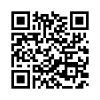ADAPTING LEARNING MATERIALS TO FACILITATE A BALANCED ACQUISITION OF LANGUAGE SKILLS, VALUES, AND 21ST CENTURY SKILLS
Downloads
(Title: Adapting Learning Materials To Facilitate A Balanced Acquisition Of Language Skills, Values, And 21st Century Skills). English language teaching in the Indonesian schools aims to develop the students' four language skills (listening, speaking, reading, and writing) in the target language and promote the acquisition of values and 21st century skills (critical thinking, creativity, collaboration, and communication). The learning materials published by the government and publishers available in the market generally focus on the development of the student's language skills and values. Hence, the learning materials should be adapted before being used so that the learning materials do not only promote the acquisition of language skills and values, but also 21st century skills. There are a number of alternatives of that teachers can use in adapting the learning materials to promote the acquisition of 21st century skills. Some of the alternatives include adapting the task input, activity/procedure, setting, and learner role and adding tasks to units and units to the textbook.
Keywords: learning material, language skill, values and 21st century skillDownloads
Bashir, M. (2014). Bahasa Inggris SMA/MA, SMK/MAK Kelas XI. Jakarta: Puskurbuk, Balitbang Kemdikbud.
Ellis, R. (1998). Teaching and research: Options in grammar teaching. TESOL Quarterly, 32, 39-60.
Fotos, S., and Ellis, R. (1991). Communicating about grammar: A task-based approach. TESOL Quarterly, 25, 605-628.
Graves, K. (2000). Designing Language Course. Boston: Heinle and Heinle Publishers.
Helen, J. (1999). Focus on Grammar. Sydney: National Centre for English Language Teaching and Research Macquarie University.
Krashen, S.D. (1982). Principles and Practice in Second Language Acquisition. Oxford: Pergamon.
Krashen, S.D. (1987). Principles and Practice in Second Language Acquisition. New York: Phoenix ELT.
Long, M. H. (1981). Input, interaction and second language acquisition. In Winitz (Ed.). Annals of the New York Academy of Sciences, 379, 259-278.
Mackey, A. (1999). Input, interaction, and second language development: An empirical study of question formation in ESL. SSLA, 21, 557-587.
Nunan, D. (2004). Task-based Language Teaching. Cambridge: Cambridge University Press.
Pica, T., Kanagy, R., and Falodun, J. (1993). Choosing and using communication tasks for second language instruction. In Crookes, G. and Gass, S.M. (Eds.), Tasks and Language Learning: Integrating Theory and Practice (pp. 9-34). Clevedon: Multilingual Matters.
Priyana, J. (2002). Developing EFL Task-based Language Instruction in an Indonesian Primary School Context (unpublished Ph.D. thesis, Macquarie University – Sydney, 2002).
Richards, J.C. (1999). Addressing the grammar-gap in task work. TESOL in Context, 9, 3-10.
Richards, J.C. (2001). Curriculum Development in Language Teaching. Cambridge: Cambridge University Press.
Schmidt, R. (1990). The role of consciousness in second language learning. Applied Linguistics, 2, 129-158.
Skehan, P. (1996). A framework for the implementation of task-based instruction. Applied Linguistics, 17, 38-62.
Sugiarti (2010). Emprical Evaluation for Development of Reading Tasks (unpublished Sarjana thesis, State University of Yogyakarta, 2009).
Swain, M. (1985). Communicative competence: Some roles of comprehensible input and comprehensible output in its development. In Gass, S. and Madden, C. (Eds.). Input and Second Language Acquisition. Rowley, Mass.: Newbury House.
Swain, M. (1993). The output hypothesis: Just speaking and writing aren't enough. The Canadian Modern Language Review, 50, 158-164.
Tomlinson, B. (Ed.). 1998. Materials Development in Language Teaching. Cambridge: Cambridge University Press.
Wachidah, S. and Gunawan, A. (2014). Bahasa Inggris: When English Rings a Bell for Year VIII. Jakarta: Puskurbuk, Balitbang Kemdikbud.
Wachidah, S., Gunawan, A., Diyantari, and Khatimah, Y.R. (2016). Bahasa Inggris: When English Rings a Bell for Year VII. Jakarta: Puskurbuk, Balitbang Kemdikbud.
Widiati, U., Rohmah, Y. and Furaidah (2014). Bahasa Inggris SMA/MA, SMK/MAK Kelas X. Jakarta: Puskurbuk, Balitbang Kemdikbud.
Williams, J. (1999). Learner-generated attention to form. Language Learning, 49, 583-625.
Wright, A., Betteridge, D., and Buckby, M. (2006). Games for Language Learning. Cambridge: Cambridge University Press.
The authors who publish this journal agree to the following requirements. The author retains the copyright regarding the work being simultaneously licensed below Creative Commons Attribution ShareAlike License.

Jurnal Diksi by Faculty of Languages, Arts, and Culture, Universitas Negeri Yogyakarta is licensed under a Creative Commons Attribution-ShareAlike 4.0 International License.
Based on a work at http://journal.uny.ac.id/index.php/diksi




















